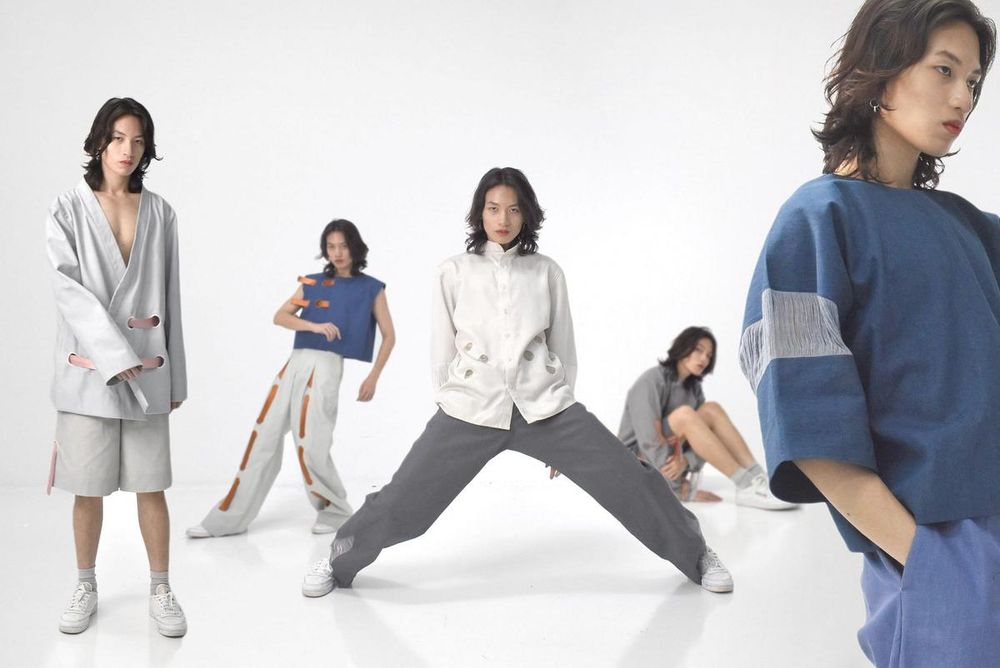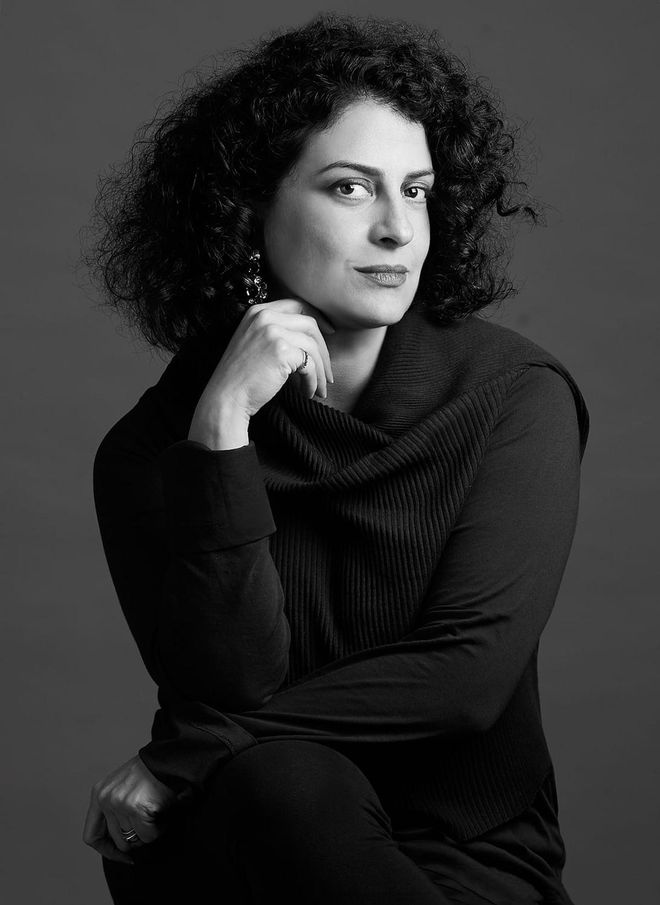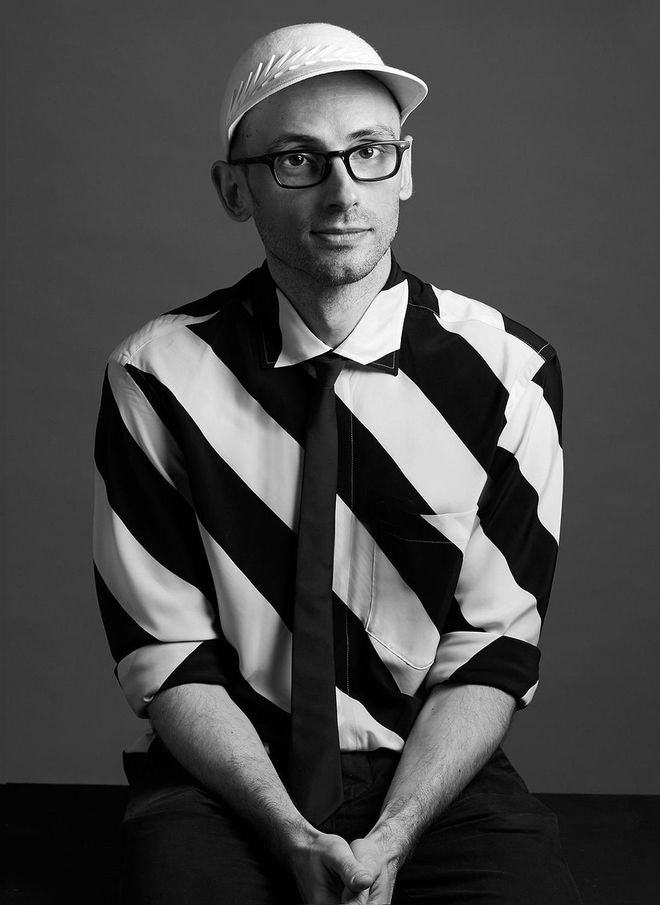Lasalle’s Fashion Graduates And Lecturers On Future-Proofing Fashion
A year’s worth of research, experimentation and production culminated in a virtual fashion runway titled ‘A New Light’ that took place earlier this month.

The pandemic has been a catalyst for newness within the fashion industry. Think Jonathan Anderson's Show in a Box concept for LOEWE during lockdown, and Jeremy Scott’s socially-distant puppet show for Moschino. These designers’ brilliance has enabled them to quickly and seamlessly adapt their practices to thrive in a digital world. And local fashion institutions—such as Nanyang Academy of Fine Arts, LASALLE College of the Arts and Raffles College of Higher Education—have had the tough task of producing future fashion practitioners with the same sense of innovation and wit.
Related article: Maria Grazia Chiuri And Isabel Allende On Making Feminist Art In A Pandemic

Circe Henestrosa, Head, School of Fashion, LASALLE College of the Arts. Photo: Courtesy
Lasalle’s Fashion Graduates And Lecturers On Future-proofing Fashion
It’s a challenge that Circe Henestrosa (Head, School of Fashion, LASALLE College of the Arts) posed to her graduating students from the BA (Hons) Fashion Design & Textiles course as well. They were tasked with investigating the concept of change within the fashion industry for their graduating collection. A year’s worth of research, experimentation and production culminated in a virtual fashion runway titled ‘A New Light’ that took place earlier this month.
Related article: Louis Vuitton To Hold First Physical Fashion Show In Singapore Amid Covid-19 Pandemic
Many of the students’ works questioned the concept of sustainability and answered with experimental techniques and textiles. A prime example of this would be Joshua Ng’s collection aptly named ‘Spaghetti Cutting’. The Taiwanese-Singaporean fashion designer invented a new way of production where design is led by patterns, instead of the traditional modus operandi. Elsewhere, Ruby Tan manipulates tattered textiles to suit her needs in her series named ‘Fallible’.
Related article: EIC Kenneth Goh On How Brands Are Reimagining Fashion Shows Amid A Pandemic

Dinu Bodiciu, Lecturer, School of Fashion, LASALLE College of the Arts. Photo: Courtesy
Lasalle’s Fashion Graduates And Lecturers On Future-proofing Fashion
Ahead, Circe and Dinu Bodiciu (Lecturer, School of Fashion, LASALLE College of the Arts) tell us more about how the pandemic has shaped their current curriculum with the graduates weighing in as well as on their collections and creative processes.
How has the BA (Hons) Fashion Design & Textiles programme prepared this year’s graduates to succeed in the fashion industry’s changing landscape?
Circe: We are aware of and align ourselves to current pedagogical trends. Looking at the digital realm has been a main area of exploration for us and many fashion schools. For example, one of our main challenges has been to teach "fashion-making" techniques online and to work around this, we have created digital tutorials and other fun online content that complement the students' learning and many enjoyed them.
With that said, the physical remains very important to us. From fashion-making to fashion communication, we will continue addressing fashion as a merger of both the physical and the digital in our pedagogical approach. We have increased the number of digital classes offered and software used in design production so as to better equip students for the future. We have also created spaces and tailored projects where students can speculate and question new design practices and think about design alternatives for the future.
Sustainability seems to be a big theme among this year’s graduating collections. Can you share with us what are some of the sustainable techniques or processes employed in the collections?
Circe: From their first year up until graduation, students learn and explore design through various possibilities that are always underpinned by sustainability. Over time, this becomes the true way of thinking and triggers new practices and approaches. From studio projects to lectures, students learn about zero waste design, natural dyeing processes, slow design thinking, circularity, and innovating new textiles from new materials. All these methods are evident in the collections that our BA (Hons) Fashion Design and Textiles graduands have created this year.
What roles do you think sustainability will continue to play in fashion’s future?
Circe: Everything! We strongly believe that sustainability is a way of thinking and every designer of the future has to fully incorporate this into their minds and practice. Our students' graduation projects place sustainability at the core of their creative process, integrating it into their design language. We believe that in this way, our graduands will become future leaders for sustainable practices that are articulated in Asia and the world.
Dinu: Today, sustainability should be fully integrated in fashion practice and design education, at every level and in each specialism, from design to business and more. We have fully integrated this way of thinking into our education. We strongly believe that future designers will not consider sustainability as something that needs to be added to the design equation, but rather they will view sustainability as the underpinning of the equation itself and without it, design doesn't make sense; it cannot exist.